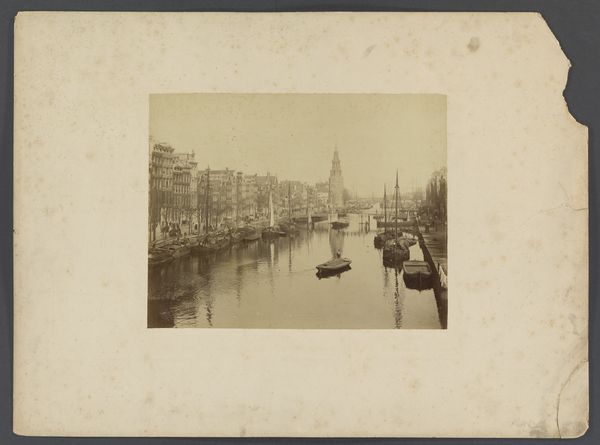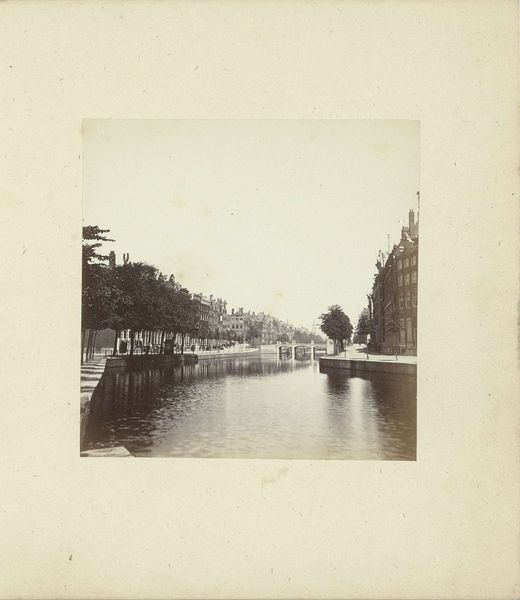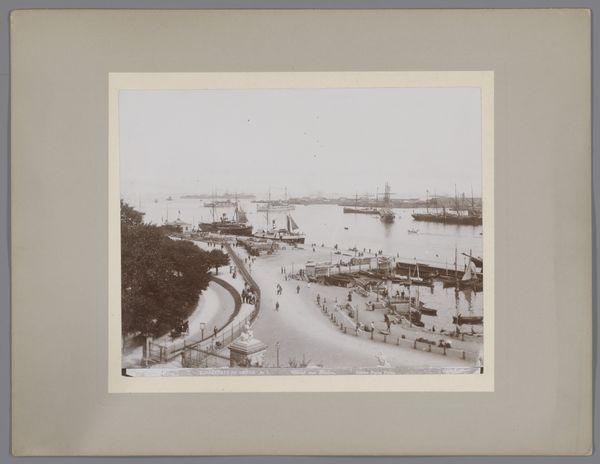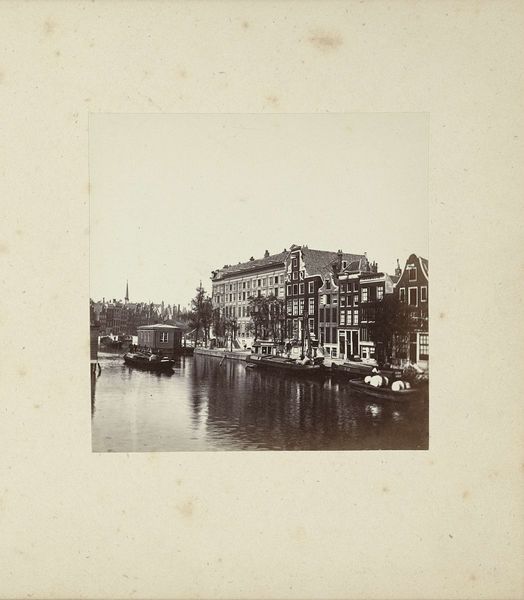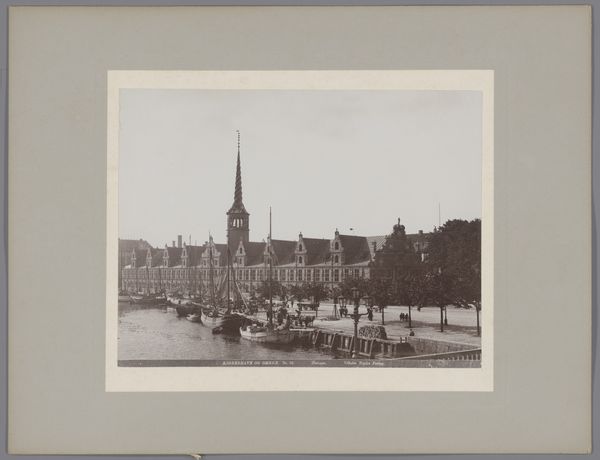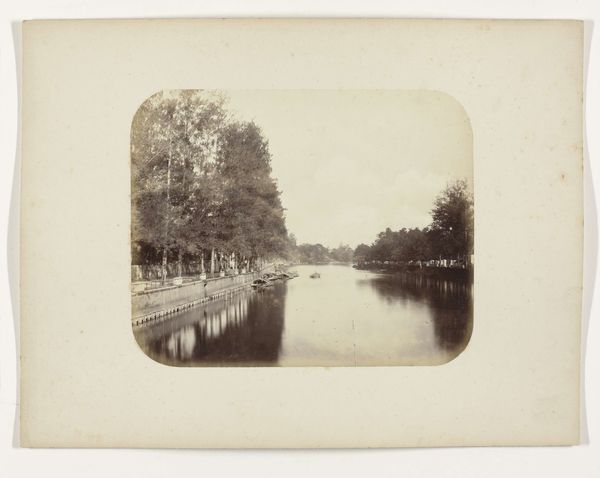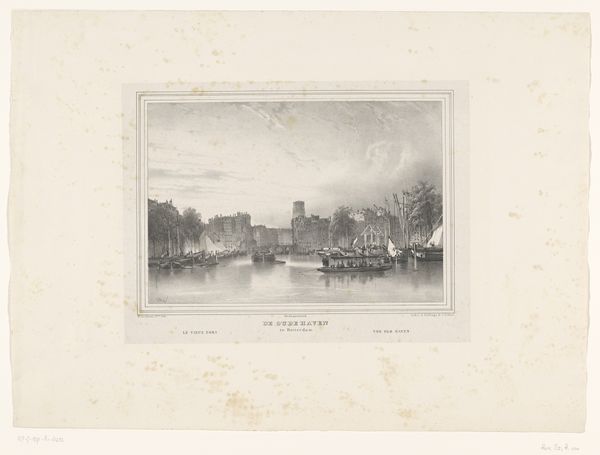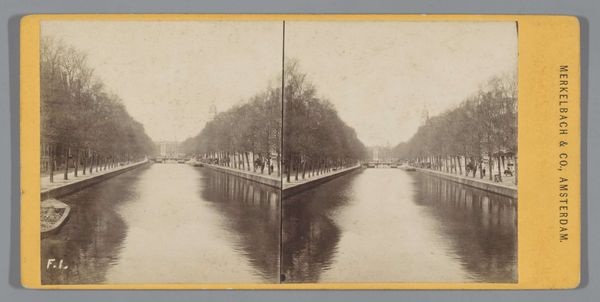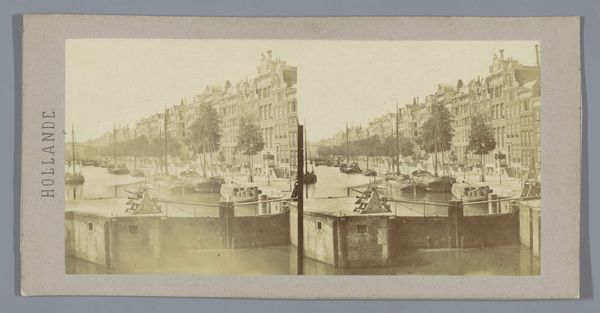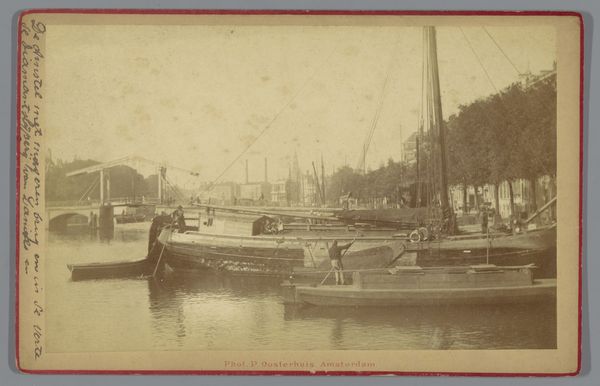
photography, gelatin-silver-print
#
dutch-golden-age
#
landscape
#
photography
#
gelatin-silver-print
#
cityscape
#
realism
Dimensions: height 170 mm, width 234 mm
Copyright: Rijks Museum: Open Domain
Curator: This gelatin silver print, "Gezicht in Amsterdam," was created anonymously sometime between 1892 and 1900. It resides here at the Rijksmuseum, offering us a glimpse into the city's past. Editor: There's something melancholic about this scene. The monochrome palette softens the details, casting a quiet mood over the scene. The boats feel still, almost waiting. Curator: It's an intriguing perspective, capturing a time of transition for Amsterdam. The late 19th century was a period of immense urban and industrial growth in the Netherlands. Photography became an essential tool for documenting these changes. Editor: Precisely! We must remember that documentary images never give us neutrality. Photography played a pivotal role in shaping public perceptions of the transformations reshaping European cities. Did it focus on the plight of newly arrived immigrants, or amplify visions of wealth, or promote public works and civic order? These are essential factors to consider when trying to 'read' a scene from the past. Curator: You're right to bring up those power dynamics. Consider the rise of pictorialism at the turn of the century; movements sought to elevate photography to fine art through manipulation and subjective interpretation, impacting the recording of daily life. Here, with realism at play, the photograph captures Amsterdam’s blend of old and new as trading shifted towards a more industrial economy. Editor: Yes. I’m particularly struck by the arrangement. The composition directs the eye along the waterways. It emphasizes linear forms, like the docks and building fronts, giving it a clear urban framework. Curator: Note how the camera records reflections of the sky on the water, subtly connecting heaven and earth and highlighting the city's relationship to nature, even as industry grows. Editor: When examining work produced in a world of inequalities, considering absences becomes as essential as recording presences. How do we center the perspectives of marginalized communities in these landscapes? Curator: These anonymous contributions can give voice to broader discussions about society and representation, ensuring that varied interpretations challenge mainstream assumptions. Editor: Absolutely. Thinking critically about whose stories get told and how are things we can actively ask when reviewing the art of the past. Curator: Indeed. It's essential to view these pieces through both historical context and today's critical awareness, inviting us to view urban environments from multiple angles.
Comments
No comments
Be the first to comment and join the conversation on the ultimate creative platform.

